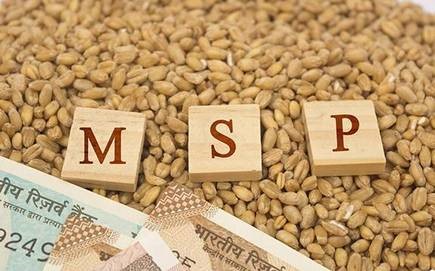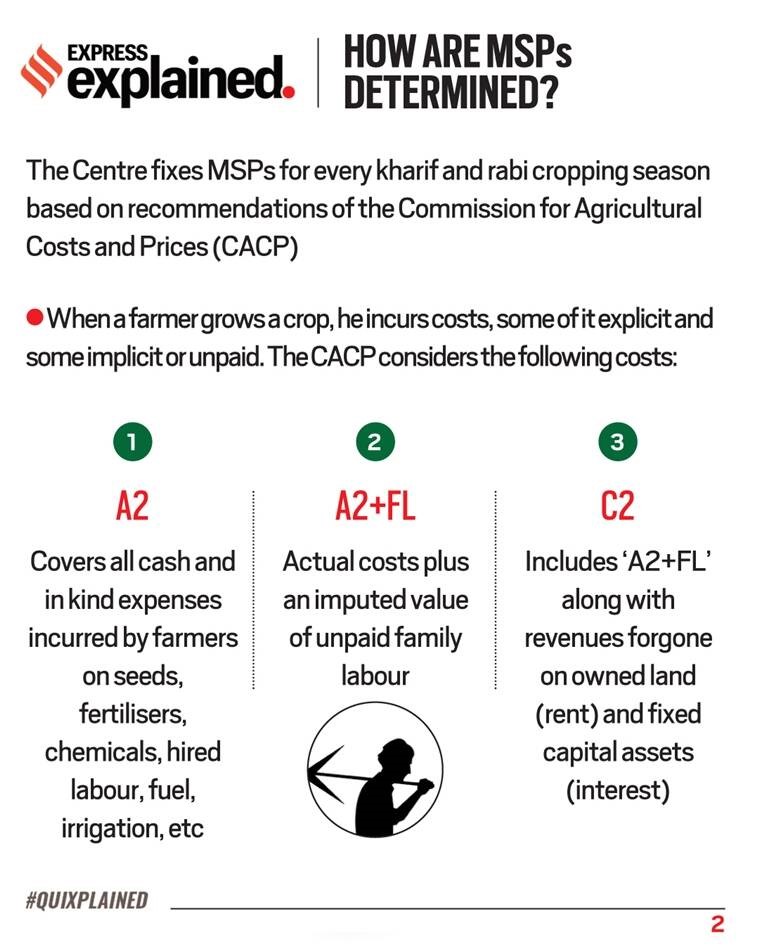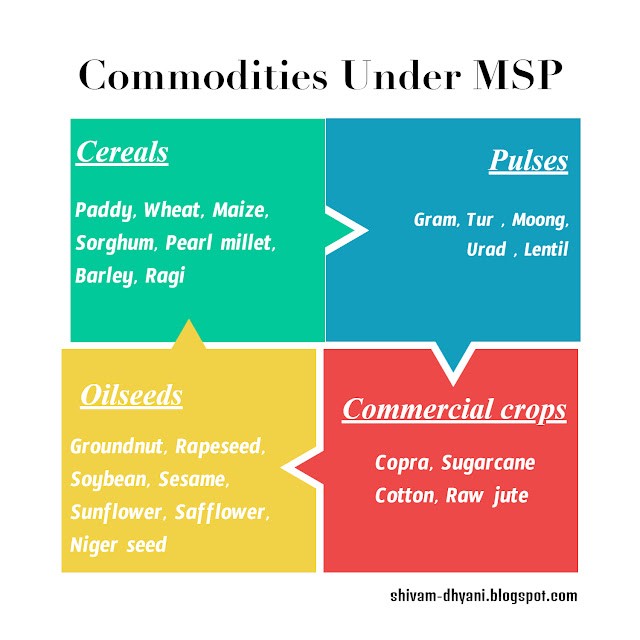Description

Disclaimer: No Copyright infringement intended.
Context
- The Cabinet Committee on Economic Affairs (CCEA) chaired by the Hon'ble Prime Minister Shri Narendra Modi has approved the increase in the Minimum Support Prices (MSP) for all mandated Rabi crops for Rabi Marketing Season (RMS) 2022-23.
About
- Government has increased the MSP of Rabi crops for RMS 2022-23, to ensure remunerative prices to the growers for their produce.
- It has announced the highest increase of 8.6% in prices of mustard, while the second highest increase of 7.8% is in prices of masur.
- The increase in MSP for Rabi Crops for RMS 2022-23 is in line with the Union Budget 2018-19 announcement of fixing the MSPs at a level of at least 1.5 times of the all-India weighted average cost of production, aiming a reasonably fair remuneration for the fanners.
What is MSP?
- The minimum support price (MSP) is an agricultural product price, set by the Government of India to purchase directly from the farmer. This is not enforceable by law.
- This rate is to safeguard the farmer to a minimum profit for the harvest, if the open market has lesser price than the cost incurred.
Details
- Government of India announces Minimum Support Prices (MSP) for 23 major agricultural commodities of Fair Average Quality (FAQ) each year in both the Crop seasons.
- It does so after taking into account the recommendations of the Commission for Agricultural Costs and Prices (CACP).
- Government also extends remunerative price to farmers through its various interventions schemes.
Calculating MSP
- Since 2009, the Commission for Agricultural Costs and Prices fixes the MSP of a crop based on:
- cost of production
- demand
- supply
- price fluctuations
- market price trends
- different costs and
- international market prices
- agricultural wage rate

Procurement
- The procurement at MSP is being done by Central and State Agencies under various schemes of Government.
- Procurement centres are opened by respective State Government Agencies and Central Nodal Agencies like NAFED, FCI etc.
- This is done after taking into account the production, marketable surplus, convenience of farmers and availability of other logistics / infrastructure such as storage and transportation etc.

Current Status of MSP
- The MSP comes as a much relief to many farmers.
- The trouble with MSP is that while it is touted as an all-important factor for farmers promising an instant rise in their income and stability, it also has many drawbacks in implementation.
Pros of MSP
- It is a one-price policy guaranteeing assured pay, which directly influences farmer’s pockets.
- It considers various factors when fixing the price and does not leave the farmer at the mercy of the market.
- Procurement for public distribution system and buffer stock for food security come from this policy.
- It has a heavy influence on market prices and also helps the farmer grow production and match up with other sectors in terms of income.
Cons of MSP
- Hiking the MSP without investing in infrastructure is just a short-term play.
- While it does deliver immediate results, long-term developments to back-it up are also important.
- MSP covers numerous costs such as the cost of sowing (A2) and labour (FL).
- These considerations are controversial with suggestions that it should be based on comprehensive costs (C2), which also include land rent costs.
- Too much of a hike on MSP either paves way for inflationary effects on the economy, with a rise in prices of foodgrains and vegetables, or loss to government treasury if it decides to sell at a lower price as compared to the higher MSP it bought at.
- MSP is a nationwide single price policy. However, the actual costing for production varies from place to place, more severely so in areas lacking irrigation facilities and infrastructure. Thus, not all farmers have equal benefits.
- Market prices should ideally never be below MSP. If they fall below the MSP, in concept, the farmer can always sell it to the government, which will then resell it or store as buffer.
- However, practically this does not always happen. The market value in many cases does fall below MSP due to lack of infrastructure and procurement apparatus on the government’s end.
- MSP is notified for 23 crops, but effectively ensured only for two-three crops.
- Thus, MSP while still being significant is not the only go-to solution for solving all farmer woes.
Way Ahead
- Public procurement needs to continue for staple cereals, but farmers of non-staple food crops need to be provided with direct income transfers.
- These are fiscally prudent, obviate the need for physical procurement and storage by the government, do not distort current production, and also provide a basic income to farmers.
- These will also address the main concern over the recent farm laws related to the vulnerability of small and marginal farmers and may help these farmers to avoid distress sales.
- Swaminathan Commission prescribed MSP 50 per cent above C2.
- The Govt. can also go for the alternative of ‘deficiency price payment’ without requiring the government to purchase undesirable quantities and undesirable commodities.
- Deficiency price payment must be part of the difference between the actual price received by farmers and the MSP.
- Example: The Madhya Pradesh government has launched a ‘Price Deficiency Payment’ schemes for the farmers called ‘Bhavantar Bhugtan Yojana’ (BBY) in 2017.
https://pib.gov.in/PressReleseDetail.aspx?PRID=1738230
https://pib.gov.in/PressReleasePage.aspx?PRID=1753109













